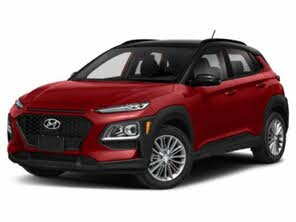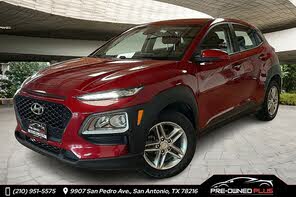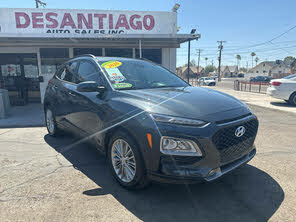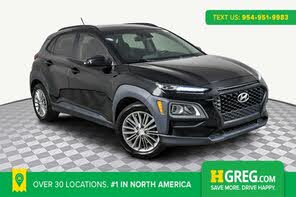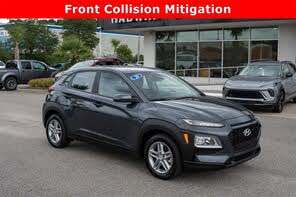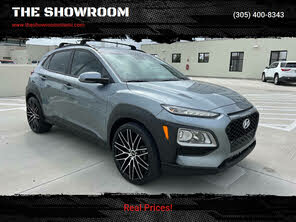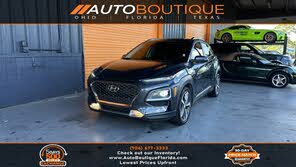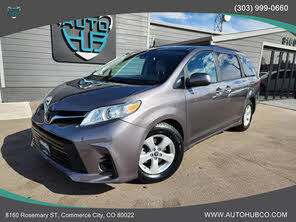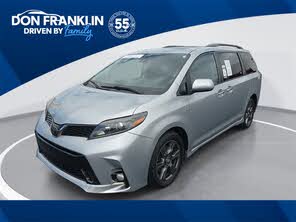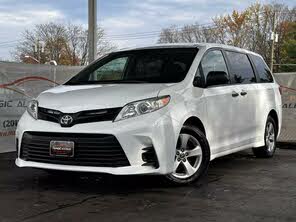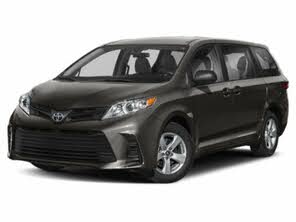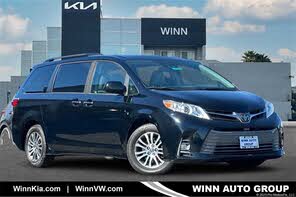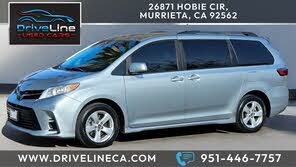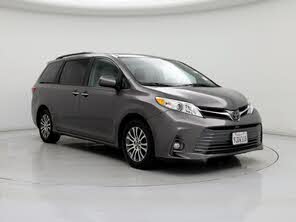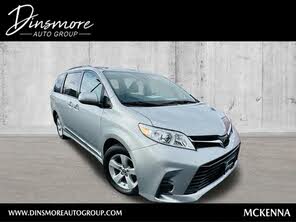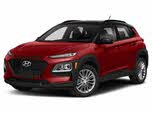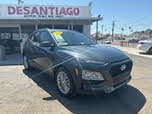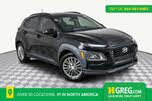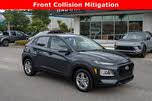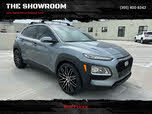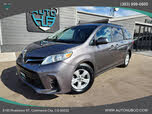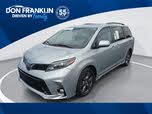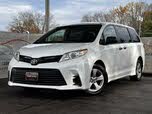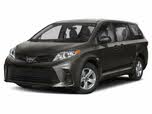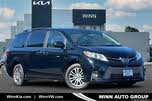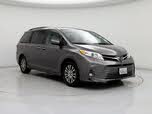2020 Hyundai Kona vs 2020 Toyota Sienna
Overview | |
MSRP$29,715 | MSRP$20,300 |
Average price$30,329 | Average price$17,259 |
Listings526 | Listings440 |
Ratings & Reviews | |
User Reviews | User Reviews |
Expert reviews7.8 out of 10 | Expert reviews6.8 out of 10 |
Pros
| Pros
|
2020 Toyota Sienna Reviews SummarySince the second half of the 20th century, each decade has had a hot-topic family car, and, as we’ve noted in a number of reviews this year, the crossover is our current darling vehicle. Before the crossover, there were big, truck-based SUVs. Before that, there were station wagons. And for the past 35 years, there's always been the minivan. The Dodge Caravan has been widely considered the Patient Zero of the minivan segment. From there, seemingly everyone joined the party, including Toyota, Nissan, Ford, Chevy, GMC, Volkswagen, Oldsmobile, Ford, and more. Heck, even Mercury had a “Nautica Edition” version of the Villager. The minivan was king once, the crossover is king now, and some other type of vehicle will likely dominate in the near future. But in all this, the 7- and 8-passenger minivans will always represent the ultimate in versatility. The crossover is an image-forward fad with a dash of usability, but the minivan continues to prove itself as the pinnacle of practicality. The 2020 Toyota Sienna is neither the newest nor flashiest minivan out there, but when you absolutely need space for people and gear, there’s nothing better. Additionally, the Sienna is the only minivan to offer all-wheel drive (AWD), which is something specifically desired by many car buyers. | |
2020 Hyundai Kona Reviews SummaryThe Hyundai Kona subcompact SUV is one of the smallest cars you can buy with all-wheel drive. It competes in a class of four-door hatchbacks with the lifted suspensions and higher driving positions that crossover buyers want—and with the same generous list of convenience and safety features that come on larger crossovers. We last tested the Kona when it came out for 2018, but a new trim level and more standard driver assists are the major changes for 2020. For what Hyundai charges, the Kona is cramped and the interior disappoints, yet exterior style and on-road performance are spectacular. | |
Popular Features & Specs | |
Engine3.5L 296 hp V6 | Engine2.0L 147 hp I4 |
Drive TrainFWD | Drive TrainFWD |
Seating Capacity2 | Seating Capacity5 |
Horsepower296 hp @ 6200 rpm | Horsepower147 hp @ 6200 rpm |
MPG City19 | MPG City27 |
MPG Highway26 | MPG Highway33 |
Engine | |
Engine Name3.5L 296 hp V6 | Engine Name2.0L 147 hp I4 |
Torque263 lb-ft @ 4700 rpm | Torque132 lb-ft @ 4500 rpm |
Horsepower296 hp @ 6200 rpm | Horsepower147 hp @ 6200 rpm |
DrivetrainFWD | DrivetrainFWD |
Fuel Economy | |
MPG City19 | MPG City27 |
MPG Highway26 | MPG Highway33 |
Interior | |
Seating Capacity2 | Seating Capacity5 |
Safety | |
Front Crash Overall4 | Front Crash Overall5 |
Side Crash Overall5 | Side Crash Overall5 |
Dimensions & Capacity | |
Cargo Space | Cargo Space19.2 cu ft |
Curb Weight4375 lbs | Curb Weight2890 lbs |
Height68.9 in | Height61.0 in |
Length200.2 in | Length164.0 in |
Width78.1 in | Width70.9 in |
Wheelbase119.3 in | Wheelbase102.4 in |
Maximum Payload | Maximum Payload1089 lbs |
Number of doors4 | Number of doors4 |
Overview | ||
MSRP | $29,715 | $20,300 |
Average price | $30,329 | $17,259 |
Listings | ||
Ratings & Reviews | ||
User reviews | ||
Expert reviews | 7.8 out of 10Read full review | 6.8 out of 10Read full review |
Pros & cons | Pros
| Pros
|
Summary | Since the second half of the 20th century, each decade has had a hot-topic family car, and, as we’ve noted in a number of reviews this year, the crossover is our current darling vehicle. Before the crossover, there were big, truck-based SUVs. Before that, there were station wagons. And for the past 35 years, there's always been the minivan. The Dodge Caravan has been widely considered the Patient Zero of the minivan segment. From there, seemingly everyone joined the party, including Toyota, Nissan, Ford, Chevy, GMC, Volkswagen, Oldsmobile, Ford, and more. Heck, even Mercury had a “Nautica Edition” version of the Villager. The minivan was king once, the crossover is king now, and some other type of vehicle will likely dominate in the near future. But in all this, the 7- and 8-passenger minivans will always represent the ultimate in versatility. The crossover is an image-forward fad with a dash of usability, but the minivan continues to prove itself as the pinnacle of practicality. The 2020 Toyota Sienna is neither the newest nor flashiest minivan out there, but when you absolutely need space for people and gear, there’s nothing better. Additionally, the Sienna is the only minivan to offer all-wheel drive (AWD), which is something specifically desired by many car buyers. | The Hyundai Kona subcompact SUV is one of the smallest cars you can buy with all-wheel drive. It competes in a class of four-door hatchbacks with the lifted suspensions and higher driving positions that crossover buyers want—and with the same generous list of convenience and safety features that come on larger crossovers. We last tested the Kona when it came out for 2018, but a new trim level and more standard driver assists are the major changes for 2020. For what Hyundai charges, the Kona is cramped and the interior disappoints, yet exterior style and on-road performance are spectacular. |
Video | ||
Popular Features & Specs | ||
Engine | 3.5L 296 hp V6 | 2.0L 147 hp I4 |
Drive Train | FWD | FWD |
Seating Capacity | 2 | 5 |
Horsepower | 296 hp @ 6200 rpm | 147 hp @ 6200 rpm |
MPG City | 19 | 27 |
MPG Highway | 26 | 33 |
Engine | ||
Engine Name | 3.5L 296 hp V6 | 2.0L 147 hp I4 |
Torque | 263 lb-ft @ 4700 rpm | 132 lb-ft @ 4500 rpm |
Horsepower | 296 hp @ 6200 rpm | 147 hp @ 6200 rpm |
Drivetrain | FWD | FWD |
Fuel Economy | ||
MPG City | 19 | 27 |
MPG Highway | 26 | 33 |
Interior | ||
Seating Capacity | 2 | 5 |
Safety | ||
Front Crash Overall | 4 | 5 |
Side Crash Overall | 5 | 5 |
Dimensions & Capacity | ||
Cargo Space | 19.2 cu ft | |
Curb Weight | 4375 lbs | 2890 lbs |
Height | 68.9 in | 61.0 in |
Length | 200.2 in | 164.0 in |
Width | 78.1 in | 70.9 in |
Wheelbase | 119.3 in | 102.4 in |
Maximum Payload | 1089 lbs | |
Number of doors | 4 | 4 |
The 2020 Toyota Sienna, part of its third generation, had been around since the 2011 model year. Despite a 2018 update that introduced newer infotainment tech and minor changes, the 2020 Sienna still felt dated. The front doors emitted a hollow "thud" when slammed, indicating a lack of attention to fit and finish. The instrument panel seemed to come from Toyota's 2010 parts bin, though its simplicity made the controls easy to use. The Sienna offered various trims, from the base L with 17-inch alloy wheels and a 7-inch touchscreen to the Limited Premium with leather seats, a JBL audio system, and a DVD entertainment system. The SE trim, recommended by CarGurus, featured 19-inch alloy wheels, a mesh grille, and a power rear liftgate, making it a practical choice for families.
The 2020 Hyundai Kona, larger than the Ford EcoSport, presented a sleek, sporty, and dramatic exterior for a mass-market economy car priced just above $20,000. Its tiered lighting, tall grille, and chunky matte plastic trim made it appear taller and wider. The Kona's design included slim LED running lamps, headlights spaced to the car's edges, and optional fog lights. The fender creases and black trim added to its visual appeal. However, the interior couldn't match the exterior's quality, with hard plastics and lackluster finishes. The Limited and Ultimate trims offered larger wheels and additional gray trim, while the SEL had a unique black-painted roof and pillars. Despite its shortcomings, the Kona's exterior design stood out in its segment.
The 2020 Toyota Sienna came equipped with a 3.5-liter V6 engine producing 296 horsepower and 263 pound-feet of torque, paired with an 8-speed automatic transmission. The Sienna offered stout acceleration in normal Drive mode, with a Sport mode for livelier throttle and shift response. It also had a manual mode, useful for its 3,500-pound towing capacity. The Sienna's front-wheel-drive (FWD) version returned 19 mpg city, 26 highway, and 21 combined, while the all-wheel-drive (AWD) version returned 18/24/20. The Sienna's low center of gravity and broad base provided decent handling dynamics, though its twitchy steering response required constant attention at higher speeds. Standard safety tech helped mitigate this issue.
The 2020 Hyundai Kona featured a 1.6-liter turbocharged inline-four engine with 175 horsepower and 195 pound-feet of torque, paired with a 7-speed dual-clutch transmission (DCT). The torque came on early at 1,500 rpm and stayed flat until 4,500, resulting in strong acceleration and confidence when merging onto highways. The DCT was fast to react, and the engine performed well on regular octane fuel. The Limited and Ultimate trims came with the turbo engine, while the standard engine was a 2.0-liter inline-four with 147 hp and 132 lb-ft. The Kona's AWD models featured torque vectoring and an independent rear suspension, providing excellent handling and road feel. However, the Kona's engines were noisy, and the cabin wasn't well insulated. Fuel economy for the 1.6T AWD was 26 mpg city, 29 highway, and 27 combined.
The 2020 Toyota Sienna excelled in cargo space, offering 150 cubic feet, more than competitors like the Chrysler Pacifica and Honda Odyssey. However, accessing this space required removing the second-row seats, which was easier with captain’s chairs than a bench. The third row folded seamlessly into the floor, but getting into the backseat could be challenging. Toyota also offered mobility access features, such as the Auto Access Seat, making the Sienna a practical choice for families needing extra space and accessibility.
The 2020 Hyundai Kona struggled with interior space, offering only 19 cubic feet of cargo space and 46 with the rear seats folded. Competitors like the Honda HR-V and Buick Encore GX offered significantly more cargo space. The Kona's rear legroom was average, and the scalloped roof provided additional headroom. Despite its easy-to-use controls and good sightlines, the Kona's limited interior space made it less practical for carrying passengers and cargo. It felt more like a small hatchback than a true crossover.
The 2020 Toyota Sienna's base L trim came with a 7-inch touchscreen infotainment system supporting Amazon Alexa and Apple CarPlay. Other standard features included Bluetooth connectivity, five USB ports, and a WiFi hotspot with a 6-month trial. Higher trims, like the Limited, added navigation and a JBL 10-speaker premium audio system. The Sienna also featured Driver Easy Speak, an intercom system that broadcasted the driver's voice to the rear speakers, making it easier to communicate with passengers in the back.
The 2020 Hyundai Kona, except for the base SE, offered a good list of standard features. The SE had a 7-inch touchscreen with Apple CarPlay and Android Auto. The SEL trim added proximity entry, auto/up down windows, and blind-spot monitoring. The SEL Plus included wireless charging, an eight-way power driver's seat, and an eight-speaker Infinity stereo. The Limited trim featured leather upholstery and the turbo engine, while the Ultimate trim added a sunroof, an 8-inch touchscreen with navigation, and adaptive cruise control. The Kona's Blue Link connectivity allowed remote engine start and monitoring via a smartphone app, with a 3-year subscription included.
The 2020 Toyota Sienna came standard with the Toyota Safety Sense (TSS-P) suite, including lane-departure warning, lane-keep assist, forward-collision warning with pedestrian detection, dynamic cruise control, and automatic high beams. Blind-spot monitoring was optional on lower trims and standard on the XLE and Limited trims. The Sienna earned five out of five stars in NHTSA crash tests and top ratings from the IIHS, including a Superior rating for its driver-assistance features.
The 2020 Hyundai Kona scored five out of five stars overall in NHTSA crash tests, with maximum ratings for driver and passenger in frontal and side tests. It scored four out of five stars in the rollover risk test. The IIHS rated the Kona a 2020 Top Safety Pick, with top ratings in six crash tests and a Superior rating for forward emergency braking. Standard safety features included lane-keep assist and a driver attention monitor. Pedestrian detection was only available on the Ultimate trim and received a lower score from the IIHS.
CarGurus highlights

According to CarGurus experts, the overall rating for the 2020 Toyota Sienna is 7.8 out of 10, while the 2020 Hyundai Kona scores 6.8 out of 10. Based on these ratings, the 2020 Toyota Sienna is the recommended choice, offering superior cargo space, safety features, and overall practicality for families.
Choose the 2020 Hyundai Kona if:
- You want a small SUV with a sleek, sporty exterior design.
- You prefer a turbocharged engine with strong acceleration and handling.
- You need a vehicle with modern tech features like Blue Link connectivity and adaptive cruise control.
Choose the 2020 Toyota Sienna if:
- You need a minivan with class-leading cargo space.
- You value a comprehensive suite of standard safety features.
- You require mobility access features directly from the dealership.
CarGurus highlights

According to CarGurus experts, the overall rating for the 2020 Toyota Sienna is 7.8 out of 10, while the 2020 Hyundai Kona scores 6.8 out of 10. Based on these ratings, the 2020 Toyota Sienna is the recommended choice, offering superior cargo space, safety features, and overall practicality for families.
Choose the 2020 Hyundai Kona if:
Shop Now- You want a small SUV with a sleek, sporty exterior design.
- You prefer a turbocharged engine with strong acceleration and handling.
- You need a vehicle with modern tech features like Blue Link connectivity and adaptive cruise control.
Choose the 2020 Toyota Sienna if:
Shop Now- You need a minivan with class-leading cargo space.
- You value a comprehensive suite of standard safety features.
- You require mobility access features directly from the dealership.

By: CarGurus + AI
At CarGurus, our team of experienced automotive writers remain at the heart of our content operation, conducting hands-on car tests and writing insightful guides that are backed by years of industry experience. To complement this, we are harnessing AI to make our content offering more diverse and more helpful to shoppers than ever. To achieve this, our AI systems are based exclusively on CarGurus content, ratings and data, so that what we produce is both unique to CarGurus, and uniquely helpful to car shoppers.












